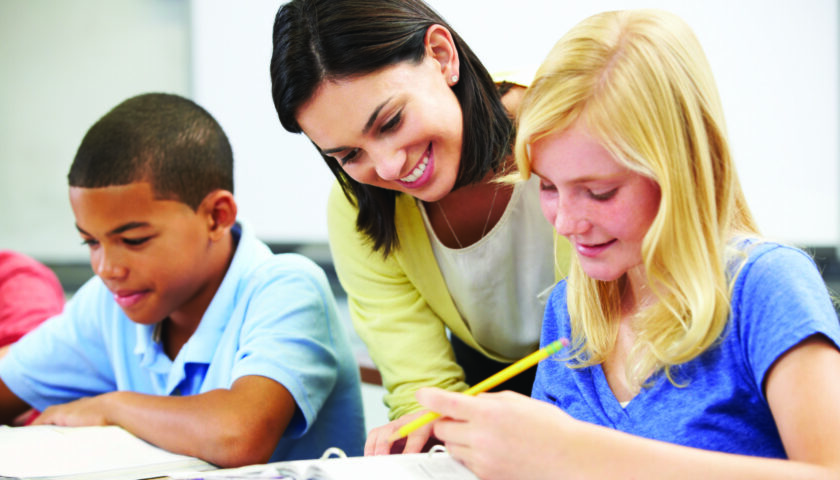Mindfulness practices, rooted in ancient meditation traditions, have gained significant attention in recent years for their potential to enhance various aspects of mental and physical well-being. In educational settings, mindfulness has been proposed as a tool to improve academic performance by fostering better focus, reducing stress, and enhancing emotional regulation. This article explores how mindfulness practices can positively impact academic performance, the mechanisms behind their effectiveness, and practical strategies for integrating mindfulness into educational environments.
Understanding Mindfulness
Definition of Mindfulness
Mindfulness is the practice of paying focused, non-judgmental attention to the present moment. It involves being aware of one’s thoughts, emotions, and physical sensations as they occur, without getting caught up in them or reacting impulsively. This state of awareness can be cultivated through various techniques, such as meditation, breathing exercises, and mindful movement.
Types of Mindfulness Practices
Mindfulness Meditation
Mindfulness meditation typically involves sitting quietly and focusing on the breath, allowing thoughts to come and go without judgment. This practice helps develop a sense of calm and awareness that can be applied to everyday situations.
Body Scan
The body scan is a mindfulness practice that involves systematically focusing attention on different parts of the body, noticing any sensations or tension. This practice promotes relaxation and body awareness.
Mindful Breathing
Mindful breathing involves paying close attention to the breath as it moves in and out of the body. This practice can be done anywhere and helps to anchor the mind in the present moment, reducing stress and improving concentration.
Mindful Movement
Mindful movement includes practices like yoga or tai chi, which combine physical activity with mindful awareness. These practices enhance physical and mental well-being by promoting relaxation and focus.
Impact of Mindfulness on Academic Performance
Enhanced Focus and Concentration
Improved Attention Span
Mindfulness practices help train the mind to focus on a single task without getting distracted by external stimuli or wandering thoughts. This enhanced attention span is crucial for academic tasks that require sustained concentration, such as studying for exams or completing assignments.
Reduced Cognitive Overload
By promoting a state of calm and focused awareness, mindfulness can reduce cognitive overload. Students who practice mindfulness are better able to filter out irrelevant information and concentrate on what is important, leading to more efficient learning and problem-solving.
Stress Reduction and Emotional Regulation
Lower Stress Levels
Academic stress can negatively impact students’ performance and overall well-being. Mindfulness practices have been shown to reduce stress levels by lowering cortisol, the body’s primary stress hormone. This reduction in stress helps create a more conducive environment for learning and academic achievement.
Better Emotional Regulation
Mindfulness enhances emotional regulation by helping students recognize and manage their emotions more effectively. Students who practice mindfulness are better equipped to handle the emotional ups and downs of academic life, which can lead to improved performance and resilience in the face of challenges.
Improved Memory and Cognitive Function
Enhanced Working Memory
Working memory is the ability to hold and manipulate information over short periods. Mindfulness practices have been found to improve working memory, which is essential for tasks such as following complex instructions, solving problems, and retaining information learned in class.
Cognitive Flexibility
Mindfulness promotes cognitive flexibility, the ability to switch between different tasks or thoughts efficiently. This skill is particularly important for academic success, as it allows students to adapt to changing demands and think creatively about solving problems.
Increased Motivation and Engagement
Intrinsic Motivation
Mindfulness fosters intrinsic motivation by helping students connect with their inner drive to learn and achieve. When students are more aware of their thoughts and feelings, they are better able to set meaningful goals and stay motivated to pursue them.
Higher Engagement
Mindful students are more engaged in their learning activities. By being fully present in the moment, they can participate more actively in class discussions, collaborate effectively with peers, and immerse themselves in their studies, leading to better academic outcomes.
Mechanisms Behind the Effectiveness of Mindfulness
Neurobiological Changes
Brain Structure and Function
Research has shown that mindfulness practices can lead to structural and functional changes in the brain. Areas associated with attention, emotional regulation, and executive function, such as the prefrontal cortex and the hippocampus, show increased activity and connectivity in individuals who practice mindfulness regularly.
Neurotransmitter Balance
Mindfulness influences the balance of neurotransmitters in the brain, such as serotonin and dopamine, which play a key role in mood regulation, motivation, and cognitive function. This balance supports overall mental well-being and enhances the capacity for learning.
Psychological Benefits
Increased Self-Awareness
Mindfulness enhances self-awareness, allowing students to better understand their learning processes, strengths, and areas for improvement. This awareness fosters a growth mindset, encouraging students to embrace challenges and persist in the face of difficulties.
Reduced Rumination
Mindfulness reduces rumination, the repetitive and often negative focus on past events or future worries. By decreasing rumination, mindfulness helps students stay focused on the present moment, reducing anxiety and improving academic performance.
Integrating Mindfulness into Educational Environments
Classroom Practices
Mindful Moments
Incorporating short mindful moments or breathing exercises into the classroom routine can help students transition between activities and maintain focus. These brief practices can be as simple as a few minutes of guided breathing or a quick body scan.
Mindfulness-Based Curriculum
Some schools have integrated mindfulness-based curriculums that teach students mindfulness techniques and their applications in daily life. These programs often include lessons on stress management, emotional regulation, and focused attention, providing students with valuable skills for academic success.
Teacher Training
Professional Development
Providing teachers with professional development in mindfulness can help them incorporate these practices into their teaching. Training programs can equip teachers with the tools to lead mindfulness exercises and create a supportive, mindful classroom environment.
Role Modeling
Teachers who practice mindfulness can serve as role models for their students. By demonstrating mindful behavior, such as remaining calm under pressure and responding thoughtfully to challenges, teachers can inspire students to adopt similar practices.
Family and Community Involvement
Parent Workshops
Offering mindfulness workshops for parents can help them support their children’s mindfulness practices at home. These workshops can teach parents simple mindfulness techniques and strategies for creating a mindful home environment.
Community Partnerships
Schools can partner with community organizations to provide mindfulness resources and support for students and families. These partnerships can offer access to mindfulness programs, workshops, and materials that reinforce the benefits of mindfulness in academic and personal life.
Conclusion
Mindfulness practices have the potential to significantly improve academic performance by enhancing focus, reducing stress, and promoting emotional regulation. By incorporating mindfulness into educational environments, students can develop the cognitive and emotional skills necessary for academic success. Teachers, parents, and communities play a crucial role in supporting the integration of mindfulness practices, creating a holistic approach to education that benefits students’ overall well-being and academic achievement. As research continues to highlight the benefits of mindfulness, it is essential for educators to consider its implementation as a valuable tool for fostering a positive and effective learning environment.





